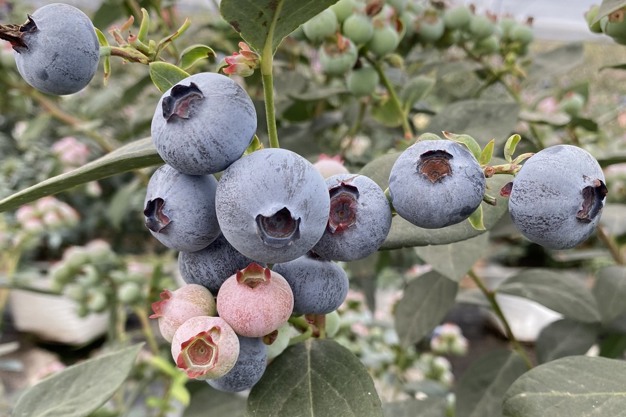As blueberry supplies continue to increase in North America right now to meet strong demand, what’s evident is that the industry continues evolving to meet consumer expectations. Those expectations include that the berry be supplied year-round. “As the category grows, tapping into new eating experiences is the future. Snacking is a natural win for blueberries. For adults and children, blueberries are an easy, delicious, and healthy snack,” says Jyoti Bhogal, Berry Fresh’s VP of sales and marketing. “We are starting to see the industry lean into this through packaging innovation: resealable, grab-and-go, single-serving sizes, etc. Through unique packaging and differentiated flavor offerings, the category has a lot of opportunity.”

Sustainability factors into those packaging decisions as well. “As we look to the future, sustainability is becoming a requirement for entry into the market. The industry is learning to pivot quickly as new regulations and preferences push growers to provide more sustainable products,” Bhogal says.
What’s on the inside of those packaging options also clearly counts, and that’s where genetics comes into play. “Consumers aren’t just eating berries because they’re healthy, they’re looking for exceptional flavor as well. The industry is pushing to elevate the berry-eating experience,” Bhogal adds. “Through partnerships and investment in proprietary genetics, we are excited to showcase some of our best blueberry varieties coming out of Mexico this upcoming season.”
Genetic developments
As production moves into Mexico, next up are the Sekoya™ varieties of blueberries that Bhogal says retailers are seeking because of their superior flavor, crunch, and quality.
Right now, blueberries are still coming from Peru, a country whose crop was down overall this season by about 30 percent due to the El Nino winter, which was warmer and affected fruit sets in the northern regions as well as certain regions of Mexico. That said, Peru’s supply has increased over the last three weeks compared to the previous season. “Coming into the U.S. market, Peru is the main driver with 79 percent of the share. The remaining supply coming into the U.S. is mainly split between Mexico and Chile,” says Bhogal.
 Chile’s crop is also down as much as 35 percent compared to last year, and it was also delayed by two to three weeks due to the colder weather. As for Mexico, it only represents 13 percent of the total volume in the marketplace right now, though it is ramping up to have a great spring crop.
Chile’s crop is also down as much as 35 percent compared to last year, and it was also delayed by two to three weeks due to the colder weather. As for Mexico, it only represents 13 percent of the total volume in the marketplace right now, though it is ramping up to have a great spring crop.
Right: Jyoti Bhogal
Shifting weather patterns
Weather, in fact, is one of the most significant challenges that the blueberry industry is facing currently. “In the past few years, we are starting to see the effects of extreme weather patterns on our industry,” says Bhogal. “From record heats to record low temperatures, our growers are faced with new weather and environmental challenges every season.”
Meanwhile, looking ahead, demand for blueberries should stay steady as retailers are gearing up for heavy promotional activity, capitalizing on consumer’s healthy-eating focus during the first part of the year. “Blueberries are becoming an expected year-round offering for consumers, and the beginning of the year is a key period to capitalize on the health-kick consumer conversation,” he adds.
 For more information:
For more information:
Laudan Chaffin
Berry Fresh
Tel.: +1 (310) 637-2401
[email protected]
www.berryfresh.com
